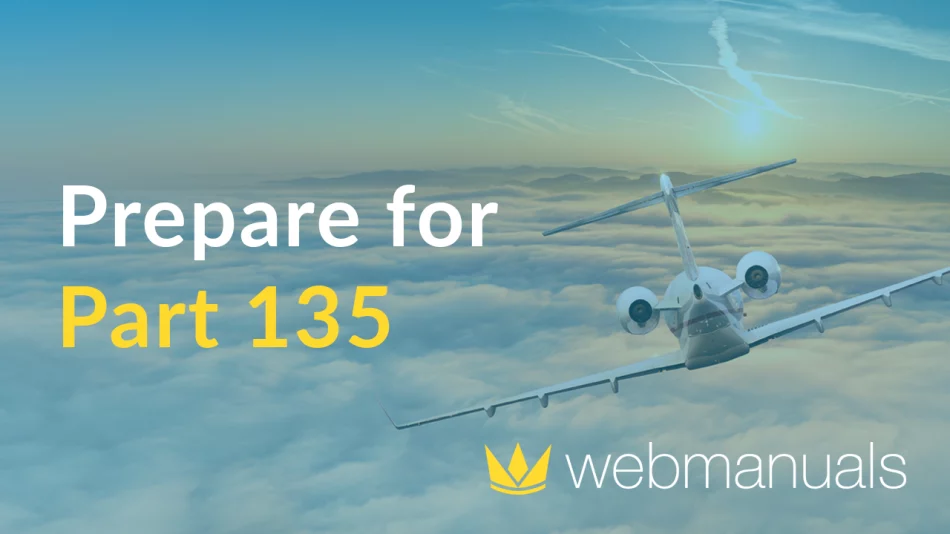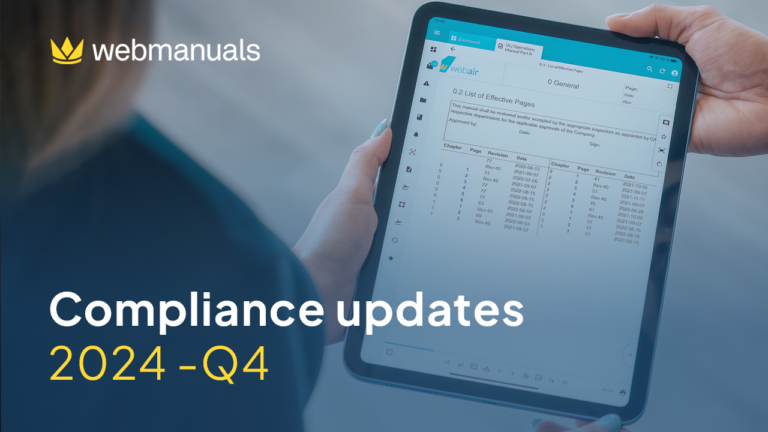The FAA has established a clear and structured guide to succeed when applying for Part 135. Here we have numbered the steps you need to consider before applying in order to be prepared and ready for the application process.
The conditions will vary depending on the scope of your operations and the extension of your crew. But regardless of the complexity in your case, there are certain elements you need to consider before starting the process. Here we will prepare you to get the certification as smoothly as possible.
1. Are your documents standardized and in order?
The application process requires multiple documents to be correctly indexed and appropriately organized. Big folders piled up back in the day, and finding the files took crucial time. Now, with the widespread implementation of digital document management systems, the industry is changing rapidly. Having the opportunity to develop and secure all your documents in a cloud-based platform facilitates the processes at all levels. Standardizing formats and structures become a simpler task when working with an overall document management software like Web Manuals.
Both operators and authorities are gaining multiple benefits from adapting to digital technologies that support crucial processes. The FAA has developed online procedures for the submission and registration phases when applying for Part 135. It makes it even more convenient to use software aligned with these standards to create and manage documents.
Therefore, using a specialized tool for aviation professionals, such as Web Manuals, eases the overall documentation process. In our software, you can automate and standardize critical modules on your manuals. Web Manuals caters to the aviation industry by creating modules out of the List of Effective Pages (LEP), Table of Contents (TOC), Minimum Equipment List (MEL), and many more day to day tools our operators use. By doing so, it will simplify formatting and control steps needed to gain FAA approval.
2. Do you have all your documents? Are all of them updated?
Certification processes are never easy and comprise the management of an overwhelming amount of documents. The specific documentation needed depends on every situation. Nevertheless, when applying for Part 135, it’s essential to keep special care for general operations manuals, maintenance records, and training documents.
We have summarized a list of the most important documents needed for a standard scope of operation:
- Maintenance Records
- General Operations Manual
- General Maintenance Manual
- Aircraft Flight Manual
- Hazmat Will or Will Not Carry Program
- Drug and Alcohol program
- TSA security program
- MEL
- Aircraft validation resting
- Pilot Records
- in accordance with pilot records improvement act of 1996
If we look deep into the Training documents, it’s mainly relevant to beware of the following documents:
- Pilot training program
- Crewmember training program
- Flight attendant training program
- Basic indoctrination training
- Emergency training
- Crew resource management training
- Initial ground and flight training
- Upgrade ground and flight training
- Recurrent ground and flight training
- Requalification training
- Differences ground and flight training
- Transition ground and flight training
Keeping track of all changes in every document is a burdensome task. Very often, small changes are easily missed in a word or excel document, especially when multiple roles are involved in the process. That’s why using a supportive digital tool brings plenty of advantages for management and writers who need to control documents after distribution while making the revision process easily understood by all party members in an approval process. In our system, it’s possible to trace through and get reports of amendments with features such as revision bars, change log, and revision summary. Check out our Smart Content Modules.
3. Are you meeting compliance standards with Federal Aviation Regulations?
One of the most demanding tasks before applying for part certification is meeting compliance monitoring requirements. It’s vital to ensure that each section of your manuals are correctly updated and connected to the proper regulations. Furthermore, you must supervise that you’re following the latest version of each regulation.
Using the traditional excel sheet demands valuable personnel resources in a time-consuming activity, and exposes this crucial stage to risks. Our system lets you connect regulations with your documents and automate alerts to notify outdated compliance connections. The Web Manuals management software has been designed to facilitate compliance managers’ responsibilities by getting a complete view of your requirements and their updating status.
We have built a comprehensive compliance library incorporating all the sub-parts included in Part 135. Furthermore, you also have access to other relevant certifications for the FAA and other significant authorities like EASA, IOSA, CASA, and ARGUS among others.
Now that you have the correct documentation to support the application, you’re ready to go.




